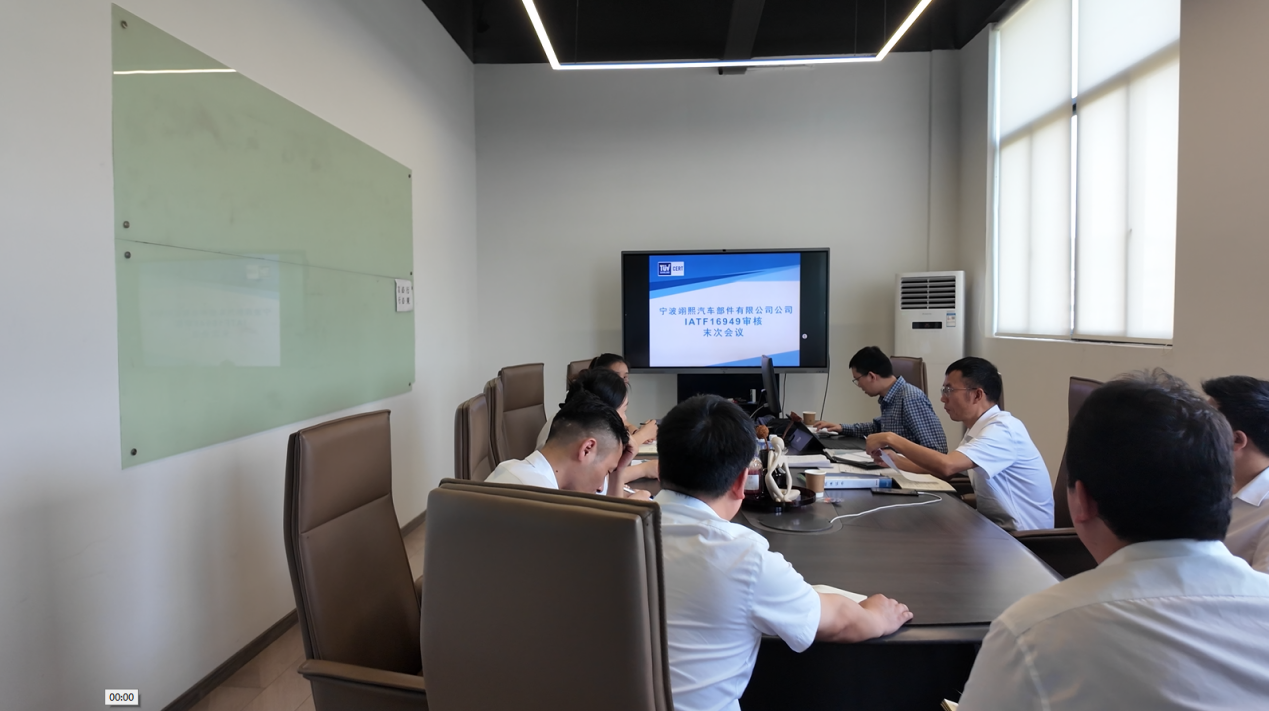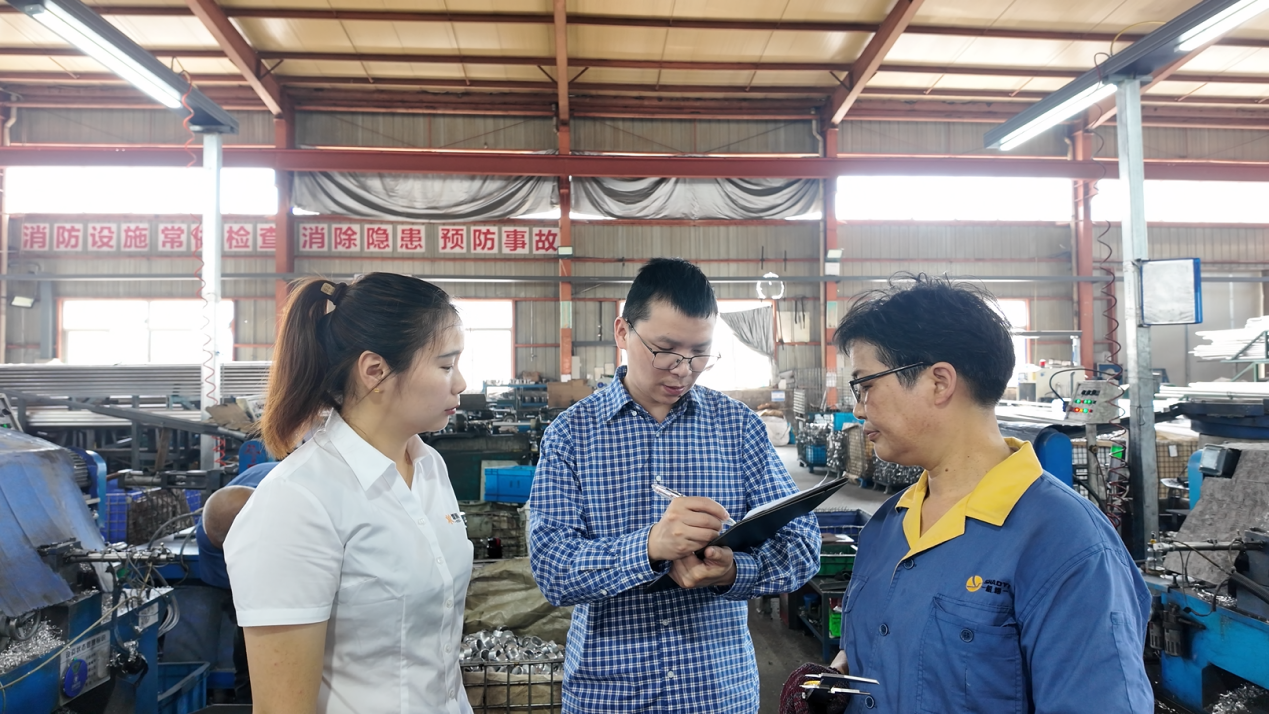2025 IATF 16949 Audit Full Process Guide | Shaoyi Automotive Components
Shaoyi Metal Technology welcomed the annual IATF 16949 audit again in May 2025. As an enterprise deeply engaged in customize automotive component , we understand the importance of quality management systems. This article takes the IATF 16949 audit as the main line and combines Shaoyi's years of practical experience to break down the key points of the "Stage 1 Audit" and "Stage 2 Audit". Hope it can help providing an efficient and operational reference guide for other enterprises preparing for the IATF 16949 audit.
v Core Keywords and Reading Guidelines
- Core Keywords: IATF 16949 audit, automotive metal component manufacturing, quality management system
- Long-tail Keywords: Stage 1 audit key points, Stage 2 audit process, automotive component manufacturing quality audit
- Reading Outline
- Stage 1: Document and Basic information Audit
- Stage 2: Management, Production, Equipment, Tooling, and Quality Audit
- Efficient Preparation Tips
- Frequently Asked Questions
- Stage 1 audit key points
The first stage of the audit focuses on verifying "traceability", combing through documents and data layer by layer.
- Customer-related information
- Automotive customer list and special requirements list
- Contract/agreement review records
- Order summary for the past 12 months
- System planning documents
- Process control list, process matrix, and relationship diagram
- Risk control plan
- Quality manual, procedure document list, and record list
- Internal audit records
- System audit, process audit, and product audit plans
- Annual audit plan, audit reports, and non-conformance records
- Management review materials
- Management review plan, meeting minutes, review reports
- Process performance indicators
- Quality objectives, quality cost analysis, process indicators, and trends (for 12 consecutive months)
- Customer and supplier performance
- Customer complaint/return 8D reports and PPM indicators
- Supplier PPM and excess freight statistics
- Product verification documents
- Customer drawings, APQP documents
- Third-party test reports and customer confirmation records
Tip: Prepare a "document list" in advance to facilitate quick access by auditors.

16949 Audit conference
- Stage 2 audit process
The second stage of the audit is conducted on-site, focusing on the "visible" processes and operations.
1. Management Assessment
- Environmental analysis: SWOT, macro (political/economic/cultural) and industry micro factors
- Risk analysis: product safety, production safety, environmental protection, etc.
- Strategic planning: 3-5 year strategic target, annual business plans, departmental KPIs
- Management review: meeting sign-in sheets, audit reports, and continuous improvement records
2. Production Process Audit
- Production planning management: order review, production orders, and capacity analysis
- Process control: first article verification, process parameter monitoring
- On-site control: area division, 5S management, shift handover records
3. Equipment and Tooling Audit
- Equipment management: euipment list, maintenance/daily inspection/repair records
- Tooling management: design and development, acceptance records, regular accuracy inspections
- Special equipment: annual inspection records and status labels
4. Quality Control Audit
- Inspection processes: incoming material inspection, in-process inspection, finished product inspection reports
- Nnqualified product management: isolation, 8D corrective and preventive actions
- Data analysis: PPM, customer satisfaction, return rate trends
Note: The focus of the Stage 2 audit is "on-site evidence". All records must be authentic and easily traceable.

IATF16949 on-site audit
v Efficient Preparation Tips
- Pre-audit self-inspection:
- Conduct an internal audit according to IATF requirements 3 months in advance to quickly identify and rectify non-conformities.
- Centralized document management:
- Maintain both electronic and paper copies of the "quality manual", "procedure documents", and "record list", updated daily.
- Team training and simulation:
- Regularly conduct quality management and audit key point training; simulate audits before the audit to improve response efficiency.
- Internal reference materials:
- Refer to our internal audit plan for templates and examples.
- Dedicated follow-up for pending items:
- Establish an "8D closed-loop" process to ensure that audit findings are corrected within 48 hours.
v Frequently Asked Questions (FAQ)
Q1: How often does the IATF 16949 audit be conducted?
A1: Surveillance audits are typically conducted annually. While re-certification audits are conducted every three years.
Q2: How to follow up on non-conformities found?
A2: It is recommended to submit a preliminary corrective action report within 48 hours and complete verification within 30 days.
Q3: Are electronic documents allowed during the audit?
A3: Auditors accept electronic documents, but they must be printable and viewable on-site.
v Conclusion:Continuous Improvement, Co-create Excellence
Shaoyi will continue to optimize its quality management system. By sharing this IATF 16949 audit full process guide, hope to help more enterprises prepare for audits efficiently.
Quality management is a continuous journey, and Shaoyi is willing to work with industry peers to jointly improve the quality of automotive component .
For more audit support and training, please visit our quality training and consulting page or contact:
✉ [email protected]
 Small batches, high standards. Our rapid prototyping service makes validation faster and easier —
Small batches, high standards. Our rapid prototyping service makes validation faster and easier — 
